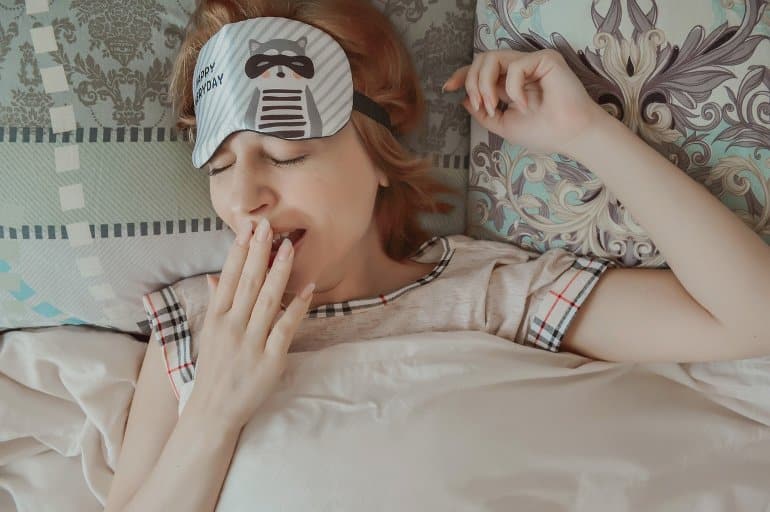Summary: People who suffer from REM behavioral disorder, a sleep disorder linked to an increased risk of developing Parkinson’s disease, exhibit limited movement of their trunk during dream re-enactment.
Source: King’s College London
New research from the Sleep and Brain Plasticity Centre at the Department of Neuroimaging, in collaboration with the Sleep Disorders Centre at St Thomas’ and Guy’s Hospital has demonstrated that patients with Rapid Eye Movement Sleep Behaviour Disorder (RBD) exhibit limited movement of the trunk during dream re-enactment.
The study, published in Nature Portfolio is one of the few studies characterizing RBD semiology and the first to demonstrate which movements are limited. This is distinct from other sleep disorders and may serve as a useful biomarker to differentiate RBD.
RBD is a rare sleep disorder characterized by re-enactment of dreams during the rapid eye movement stage of the sleep, sometimes with violent abnormal movements, vocalizations, or experiences. Importantly, it can also predict the later occurrence of neurodegenerative disorders, such as Parkinson’s disease.
In the present study researchers retrospectively analysed clinical assessments and videos from diagnostic sleep studies of 38 RBD patients that were performed at the Sleep Disorders Centre at Guy’s and St Thomas’ Hospital in 2019.
Upon confirming eligibility, they classified RBD events into distinct groups based on the types of movements. In total, 737 RBD events and 1011 distinct movements of different lengths of time were detected and subsequently described and classified.
“We are delighted to add to a growing armamentarium of biomarkers to alert us to the early stages of this devastating neurodegenerative process that leads to Parkinson’s disease and dementia.
“Sleep and its physiology provide us with a precious window into the brain’s inner workings, and here at the King’s Health Partners we work jointly with the Parkinson Foundation International Centre of Excellence to ensure our findings have a true translational value for our patients.’ Said Dr Ivana Rosenzweig, clinical senior lecturer at King’s IoPPN and the study’s lead author.
The authors noted wide-ranging movements in 675 RBD events and detected significantly fewer vocalisation events, only 62. Limb movements were common – 44% and 80% of detected movements were in the lower or upper limbs, respectively. They were described as fast, repetitive, and jerky. Movements of the head and neck were also frequent (19%).

However, only 4.88% of all recorded RBD movements were truncal (in the chest, abdomen, pelvis or back). Some patients were observed rolling in bed but only four patients in total exhibited movement resembling that of sitting upright.
Based on these results, the authors argue that RBD movements that occur while dreaming may be independent of spatial co-ordinates of the ‘outside world’ and instead rely on virtual space maps generated by the brain.
While rare, RBD is an important sleep disorder, especially because it is increasing seen as an early sign of neurodegenerative disorders, such as Parkinson’s disease, multiple systems atrophy, and Lewy body dementia. It can occur several years or even decades before any other motor signs characteristic of these diseases.
If identified, it thus presents a precious period for preventative intervention, illustrating how understanding sleep’s basic physiological components has enticing and potentially wide-reaching clinical implications.
Funding: The study made possible thanks to funding from the Wellcome Trust and has been made available as open access.
About this sleep research news
Author: Press Office
Source: King’s College London
Contact: Press Office – King’s College London
Image: The image is in the public domain
Original Research: Open access.
“Restricted truncal sagittal movements of rapid eye movement behaviour disorder” by Ivana Rosenzweig et al. Nature Portfolio
Abstract
Restricted truncal sagittal movements of rapid eye movement behaviour disorder
Unlike sleep-walkers, patients with rapid-eye-movement-behaviour disorder (RBD) rarely leave the bed during the re-enactment of their dreams. RBD movements may be independent of spatial co-ordinates of the ‘outside-world’, and instead rely on (allocentric) brain-generated virtual space-maps, as evident by patients’ limited truncal/axial movements.
To confirm this, a semiology analysis of video-polysomnography records of 38 RBD patients was undertaken and paradoxically restricted truncal/thoraco-lumbar movements during complex dream re-enactments demonstrated.







